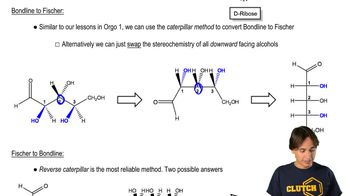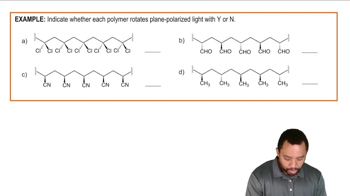Indicate whether each of the following structures is (R)-2-chlorobutane or (S)-2-chlorobutane:
a.
b.
 Verified step by step guidance
Verified step by step guidance Verified video answer for a similar problem:
Verified video answer for a similar problem:



 2:32m
2:32mMaster R and S rule for Fischer Projections. with a bite sized video explanation from Johnny
Start learning